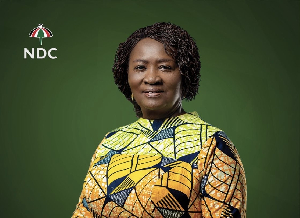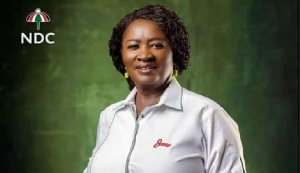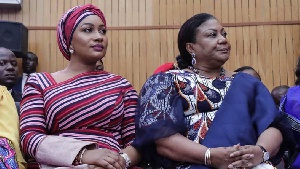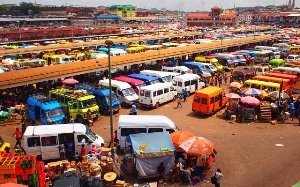Ladies and Gentlemen of the Media, let me welcome you all to this Press Conference. This Press Conference is special because it marks the 100th meeting of the Monetary Policy Committee since November 2002 when the first meeting was held. It is also special because this is the first time we are holding an in-person MPC press conference in over a year.
The MPC met last week to deliberate on recent global and domestic developments and assessed the risks to the inflation and growth outlook. Below is a summary of the developments and key considerations that the Committee deliberated on to arrive at a decision on where to position the Monetary Policy Rate.
1. Since the last meeting in March 2021, global growth momentum has strengthened, underpinned by the continued policy support, mass vaccinations, and relaxation of restrictions, especially in advanced economies. These efforts have helped to improve prospects of a rebound in economic activity, and which has been reflected in the revised IMF April 2021 global growth projections to 6.0 percent, up from 5.5 percent in the January 2021 projections. Nonetheless, the continued spread of the virus in parts of the world, the emergence of new variants, and stalled vaccination efforts across emerging market and
developing economies is continuing to cloud efforts at fighting the pandemic, creating some which could undermine the global recovery efforts.
2. Global financing conditions remain broadly supportive of the recovery process. The persistence of low borrowing costs, declining long-term bond yields, and compressed
sovereign bond spreads, reflect the re-affirmation of accommodative monetary policy stance by major central banks. Also, equity markets have strengthened further, sustained by the continued policy support and optimism about global growth prospects, while portfolio flows to emerging market economies rebounded in April 2021. Market participants expect these favourable financing conditions to persist for some time.
3. Global inflation pressures have risen in some advanced and emerging market economies, driven by the sharp rise in commodity prices, especially crude oil prices, and a combination of a surge in demand and supply constraints as economies re-open. Over the medium- term, these pressures are projected to ease as the rebound in crude prices is moderated by the projected increase in production by OPEC+ members, beginning May 2021. In addition, the still sizeable spare capacity and the significant slack in labour and product markets are expected to weigh on underlying inflation. In emerging market and frontier economies, currency movements and COVID-related supply-side constraints are expected to continue to drive price movements.
4. In the domestic economy, the recovery process from the pandemic gained some momentum evidenced by the latest high frequency indicators. The Bank’s updated Composite Index of Economic Activity (CIEA) registered a strong annual growth of 26.8 percent in March 2021, compared to a contraction by 1.9 percent in the corresponding period of 2020. The key drivers of economic activity during the period were domestic consumption (proxied by VAT collection), construction activities, international trading activities, resumption of industrial production activities and air-passenger arrivals. The latest Ghana Purchasers Managers Index, which gauges the rate of inventory accumulation by managers of private sector firms and measures dynamics in economic activity, also improved in April 2021.
5. However, the Bank’s latest confidence surveys conducted in April 2021, showed some dip in both consumer and business sentiments. Consumer confidence dipped slightly on account of recent increases in petroleum prices at the pump, new taxes, and transportation fares. In a similar direction, the optimism of businesses observed at the last MPC round also softened at this MPC round on concerns that the imposition of new taxes as announced in the 2021 Budget statement and the ongoing electricity maintenance
management programme would adversely impact operational costs in the short-term. Businesses however, expressed optimism about their company and industry prospects.
6. Recent price developments show that headline inflation dropped sharply from 10.3 percent in March 2021 to 8.5 percent in April, almost back to pre-pandemic levels and within the medium-term target band of 8±2 percent. The decline in the April inflation was driven by lower food prices and base drift effects. Food inflation dipped markedly to 6.5 percent in April from 8.8 percent in March, while Non-food inflation rose to 10.2 percent from 10.0 percent over the same comparative periods, on account of increases in ex-pump prices, and housing prices.
7. Similar to the trends in headline inflation, underlying inflation pressures eased substantially in April 2021. The Bank’s core inflation measure, which excludes energy and utility, declined to 8.6 percent in April, from 10.9 percent in March 2021. However, inflation expectations gauged from a survey of businesses, consumers and financial sector inched up in April, reflecting in part, sentiments surrounding tax adjustments and recent challenges associated with maintenance works in the power sector.
8. Provisional data on budget execution for the first quarter of 2021 indicated an overall broad cash budget deficit of 2.6 percent of GDP, against the target of 2.5 percent of GDP. The primary balance also recorded a deficit of 0.7 percent of GDP compared to the target deficit of 0.4 percent of GDP. Over the first quarter, total revenue and grants amounted to GH¢12.8 billion (3.0 percent of GDP), lower than the projected GH¢15.8 billion (3.7 percent of GDP). Total expenditures and arrears clearance amounted to GH¢24.3 billion (5.6 percent of GDP) against the target of GH¢26.5 billion (6.1 percent of GDP).
9. Financing of the fiscal deficit in the first quarter was mainly from domestic sources, which pushed up the stock of public debt to GH¢304.6 billion at the end of March 2021, compared with GH¢292.7 billion at the end of December 2020. Of the total debt stock, domestic debt was GH¢163.6 billion (37.7 percent of GDP), while the external debt was GH¢141.0 billion (32.5 percent of GDP).
10. Latest trends in monetary aggregates point to significant expansion in reserve money and sharp growth in broad money supply, reflecting lingering effects of the liquidity injection
and Covid-related fiscal stimulus programmes implemented during 2020. Reserve money increased by 32.0 percent in April 2021, compared with 21.7 percent in the corresponding period of 2020. Similarly, broad money supply (M2+) grew by 25.8 percent, relative to 16.8 percent over the same corresponding period of 2020. The increased M2+ growth was largely driven by the net domestic assets of the banking system. In terms of components, the observed expansion in M2+ was reflected in increased growth in currency outside banks and total deposits.
11. Notwithstanding sluggishness in credit demand conditions due to the pandemic, the COVID-related regulatory reliefs and policy measures continue to support lending activities in the banking sector. From the beginning of the year to April 2021, New Advances totalled GH¢10.5 billion, compared to GH¢10.9 billion for same period in 2020. Total restructured loans, executed by banks to cushion customers severely impacted by the pandemic stood at GH¢4.65 billion as at March 2021, representing some 9.8 percent of industry loan portfolio. On a year-on-year basis, annual growth in private sector credit as at April 2021 stood at 6.9 percent compared with 17.9 percent in April 2020.
12. Interest rates on government securities trended downwards across the maturity curve. The 91-day and 182-day Treasury bill rates declined to 12.8 percent and 13.6 percent respectively in April 2021, compared with 14.1 percent and 14.3 percent respectively, in April 2020. Similarly, the rate on the 364-day Government instrument declined marginally to 16.5 percent from 16.7 percent over the same comparative period. Broadly, the yield on all the medium- to long-term Government debt instruments declined over the review period, relative to the same period last year.
13. The weighted average interbank rate declined to 13.6 percent from 14.0 percent, largely reflecting improved liquidity conditions on the interbank market. This translated into a marginal decline in average lending rates of banks to 20.9 percent in April 2021, compared to 22.4 percent recorded in the same period of 2020.
14. The banking sector maintained its resilient performance through to end-April 2021, with strong growth in total assets, deposits and investments. Total assets increased by 16.4 percent to GH¢155.7 billion. This reflected strong growth in investments in government
securities by 34.9 percent to GH¢73.3 billion funded by deposits and loan repayments. Total deposits recorded an annual growth of 24.2 percent to GH¢104.9 billion on the back of the strong liquidity flows from the fiscal stimulus and payments to contractors, and to depositors and clients of defunct SDIs and SEC-licensed fund managers respectively. Overall, the impact of the pandemic on the industry’s performance was moderate, as banks remained liquid, profitable and well-capitalized.
15. Financial soundness indicators remained strong, underpinned by improved solvency, liquidity and profitability indicators. The industry’s Capital Adequacy Ratio of 21.8 percent as at end-April 2021 was well above the regulatory minimum threshold of 11.5 percent. Core liquid assets to short-term liabilities was 24.9 percent in April 2021, relative to 30.1 percent in April 2020. Net interest income grew by 18.4 percent to GH¢4.1 billion, compared with the 18.8 percent growth over the same comparative period. Net fees and commissions grew stronger by 26.5 percent to GH¢917.6 million, relative to 8.8 percent growth during same period last year, reflecting a gradual recovery in trade finance-related and other ancillary businesses of banks. Accordingly, operating income rose by 16.8 percent, marginally higher than the corresponding growth rate of 15.2 percent a year ago.
16. The banking sector deployed effective cost control measures which resulted in a marginal 1.7 percent growth in operating costs over the review period, significantly lower than the 17.8 percent growth for the same period in 2020. Loan loss provisions however increased by 29.4 percent, compared with 7.1 percent a year ago, on account of continued elevated credit risks. Profit before tax increased by 39.6 percent to GH¢2.3 billion, recovering from the marginal growth of 7.5 percent a year ago. Non-Performing Loans (NPL) ratio increased marginally from 15.0 percent in April 2020 to 15.5 percent in April 2021 arising partly from the general pandemic-induced repayment challenges as well as some bank- specific loan recovery challenges.
17. On the external sector, the average prices of cocoa, gold and crude oil traded mixed in the year to April 2021. Crude oil prices rebounded strongly and increased by 30.0 percent to settle at an average price of US$65.3 per barrel compared to US$55.3 per barrel in January, supported by production restraints from OPEC+ and re-opened economies as vaccinations expanded across most advanced countries. In contrast, gold prices declined by 5.3 percent to US$1,760.7 per fine ounce on account of stronger US dollar and rising US Treasury yields. Similarly, cocoa prices eased to US$2,419.5 per tonne in April 2021 compared to the US$2,523.9 per tonne in January. The decline in cocoa prices was attributed to increased supply in Ivory Coast.
18. These commodity price trends adversely impacted the trade balance. For the first four months of the year, total exports declined marginally by 0.2 percent year-on-year to US$5,131 million, driven mainly by a 21 percent decline in volume of gold exported attributed to instability in the sector. Total imports, on the other hand, rose by US$239.3 million to US$4,372 million, supported by increased non-oil imports. As a result, the trade balance recorded a surplus of US$759.1 million (1.1 percent of GDP) compared with a surplus of US$1,006.3 million (1.4 percent of GDP) in the same period of 2020.
19. Gross International Reserves stood at US$10,990.3 million at the end of April 2021, providing cover for 5.1 months of imports of goods and services. The reserve level compares with a stock position of US$8,624.4 million, equivalent to 4.1 months of import cover recorded at the end of December 2020. Cumulatively, the Ghana Cedi appreciated by 0.5 percent against the US dollar in the year to April 2021, compared with a depreciation of 1.2 percent in the same period of 2020. The Ghana cedi also appreciated by 2.4 percent against the Euro and depreciated by 0.6 percent against the Pound Sterling, compared with corresponding 1.4 percent and 3.7 percent appreciation over the same period in 2020.
Summary and Outlook
20. To summarize, continued policy support and increased optimism about the COVID-19 vaccinations has significantly improved the outlook, and resulted in upward revisions of global growth projections. However, the lack of certainty about further waves of the pandemic with new variants and vaccination challenges, varying degrees of economic scarring and output losses, and limited fiscal space in emerging market economies among others, may slow the global recovery process. Although global headline inflation has picked up due to rebound in crude oil prices and supply constraints, underlying inflation remains subdued due to sizeable spare capacity and the significant slack in labour and product markets, providing some scope to maintain the accommodative monetary policy stance, but with an uncertain outlook. These global conditions, from the Committee’s perspective would continue to support favourable financing conditions in the near-term.
21. On the domestic front, economic activities have picked up strongly, evidenced by the high frequency economic indicators. Consumer and business confidence softened, triggered by the new revenue measures and recent instability in power supply which coincided with the survey period. These have served to dampen sentiments but are viewed as temporary and should improve in the near-term. Private sector credit growth still remains below pre- pandemic levels but we expect banks to respond to the observed emergence of increased demand for loans to support the expected pickup in economic activity.
22. The banking sector remains sound and profitable, with adequate levels of capital and liquidity to withstand moderate to severe shocks. The industry has witnessed sustained growth in deposits, total assets, profits, and shareholder funds. The COVID–19 policy and regulatory response measures have somewhat helped to mute the effect of the pandemic on corporates and households and are being maintained in the near-term.
23. There are signs that the execution of the budget for the first four months point to some improved revenue collections and expenditure containment to ensure real re-alignment to the consolidation path. The fiscal data shows that fiscal revenues have significantly outpaced developments a year ago but slightly lags behind target. The gap in revenue performance viz-a-viz the budgeted target has been somewhat compensated for by expenditure containment measures. However, in the near-term the Committee noted risks in the fiscal outlook surrounding wage settlements, energy IPP payments, the potential for arrears build-up, potential for scaled-up expenditures associated with COVID-19 waves and mass vaccination efforts, and the implementation of the Ghana CARES programme, which would have to be carefully managed in a time consistent manner to minimize any deviation from the path of fiscal consolidation.
24. On growth outlook, the Committee’s view was that projected growth in the extractive industries, steady rollout of the vaccination programme and recovery in industry and the services sectors should work their way in supporting a faster closure of the output gap in the medium-term.
25. Headline inflation eased sharply to within the medium-term target band, driven mainly by lower food prices and base drift effects, a tight monetary policy stance and stable exchange rate conditions. Since the initial shock to inflation in April 2020, the forecast showed that inflation will be close to the central target by June 2021. These forecasts remain broadly unchanged and inflation would remain within the target band in the next quarter. Risks to the inflation outlook appear muted in the near-term, but pressures from mostly rents and transport fares, would require some monitoring to anchor inflation expectations.
26. Under these circumstances, the Committee decided to lower the Monetary Policy Rate by 100 basis points to 13.5 percent. The Committee will continue to monitor price developments closely and take appropriate action, where necessary, to contain all potential pressures to the inflation outlook.
- Financial sector clean-up: 900 people dead, pay us by June 30 - GCFM customers to government
- Bank of Ghana governor denies calling NDC MPs hooligans
- Ghana to become top destination for fintech investments – BoG
- Here is why BoG suspended forex trading licences of GT Bank, FBN Bank
- Bank of Ghana, Development Bank Ghana to launch 3i Africa Summit in Accra
- Read all related articles












